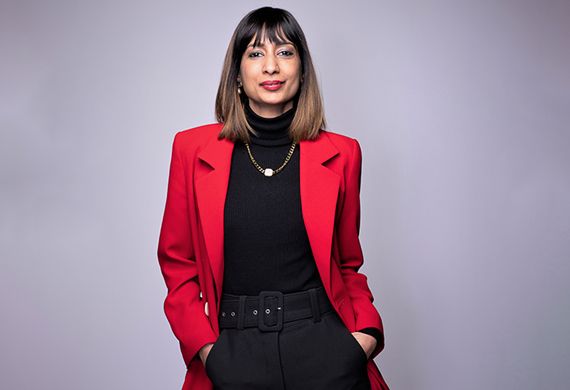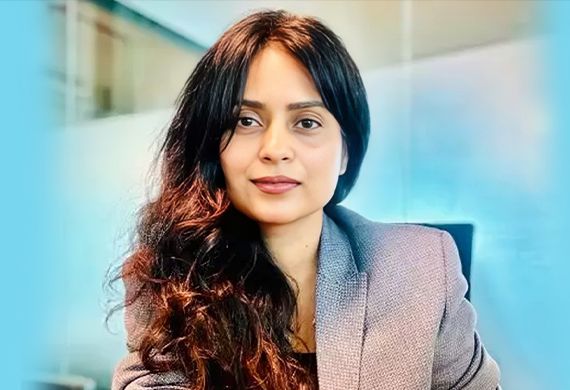
Women Leaders Driving P&L Growth in Building Materials Sector
By: Gayatri Ojha, Vice president, Saint-Gobain
Gayatri is a seasoned leader with over 20 years of experience across sales, marketing, and communications, with a strong focus on P&L and business growth. She has led strategic initiatives across global firms, blending innovation, brand strategy, and execution to drive impactful business outcomes.
In an engaging interaction with Women Entrepreneurs Review Magazine, Gayatri shares her insights on the evolving opportunities for women leaders in sales and marketing within the wholesale building materials sector. In the conversation, she emphasizes strategies for negotiation, P&L growth, and innovative mentorship models in complex, sales-driven industries.
How has the current market landscape in the wholesale building materials sector influenced opportunities for women leaders in sales and marketing, particularly in driving P&L growth?
The construction space brings into mind a vision of a man working on a site, an architect with a plan and typically a very engineering led scenario which is quite male dominated. However, things are changing on all fronts. I think most organizations that are in the building materials industry have realized that there is no one unique formula for success. This mindset of trying new ideas and approaches has led to search of a combination of right and left-brain approaches. Women in Sales and Marketing roles can bring in the acumen on numbers but also EQ and a holistic approach to looking at the P/L. I can say with my personal experience of working with other women leaders that we think long term and we have a natural ability to take people along. This helps to have a collaborative approach which is key when managing a complex P/L especially in management roles.
In high-stakes negotiations, what strategies can women leaders adopt to assert their value effectively and close deals without underselling their expertise or contributions?
I once attended a workshop on negotiation with INSEAD and out of those three intense days, one takeaway stayed with me - ‘you are always negotiating’. Negotiation is a mindset. The moment we start to think of negotiation as a continuum, women can strategize better. In my personal experience of dealing with large OEMs in my stint at TotalEnergies and now as VP – Sales and Marketing at Saint-Gobain, I have found that preparation is key. This has a psychological effect then to ward off the imposter syndrome that in my opinion is the biggest barrier to being a good negotiator in high profile deals. And the same holds good for asking your worth. Do your research – deep dive into the pay-gap if any. Do not be scared to ask tough questions and provide tough answers.
With evolving corporate dynamics, how can women balance strategic decision-making with execution while positioning themselves as indispensable leaders in traditionally male-dominated industries?
Strategy and execution both come to women very naturally. We handle complete households and manage crisis day in and day out. And we make it look like a cakewalk. I think what women can do is pick up roles that provide exposure both into strategy and execution especially in mid-career mark after a decade or so of work experience. That’s when the real strategy drivers kick in and once you showcase that you are executing with a view and objective in mind, this can send very good signals to top management. I had a senior in Vodafone who always told me ‘Gayatri, take charge’! and I did, and I thank him for that push. That’s another point – be shameless in your hunt for having good mentors and coaches. Advice during these early career days can take you on the highway to leadership roles.
What structural changes in organizations can help women in sales and marketing overcome barriers to leadership, and how can leaders drive these transformations?
This is a hot topic today in many organizations. Personally, I am working hard to bring in competent women at mid-levels in my team. Policies on travel and stay need to be reviewed for women, their needs are different. We also need to create an eco-system where they can be heard on a consistent basis, so women’s forum, committees, sharing practices et al. I do not believe in huge structural changes that are not sustainable in the long run; I think what we need are some strategic actions that can ease the life of women in sales and marketing roles especially at the bottom where the grind is harder. I do believe that such women need to be assigned a coach that can be someone from the organization but from a different business unit.
How can women leverage brand strategy and consumer insights to create a leadership narrative that strengthens their credibility in negotiations and boardroom discussions?
Having a background in brand strategy and consumer insights helped me get heard in large boardrooms. I had to pitch huge campaigns as Head of Global Advertising in TotalEnergies back in Paris and what helped me there was backing up my ideas with very concrete data on consumer insights. This is the exact outside-in approach that many manufacturing and engineering led organizations are seeking today and women have an edge when it comes to this. Also, personal branding by women is key – agree on a persona that you want to build for yourself. What do you want to be seen as – the thought-leader, the go-getter, the collaborator, the new-age leader. Then take consistent steps to seed in this persona in all such boardrooms. Every interaction is an opportunity to be an even more authentic version of yourself.
What unconventional mentorship or sponsorship models have you seen work in empowering women leaders to navigate complex career growth challenges in sales-driven industries?
Personally, I feel sponsorship is over-rated and mentorship is under-rated when it comes to promoting women leaders. You do not need sponsors when you have the talent and the ability to make the right career moves and the right vision. Sure, having a sponsor helps but I do not want women to get stressed with this. Good work speaks for itself. One can be unconventional in choosing their mentors, for example get someone who is far removed from your own industry – it can be someone from sports, someone who is an elder in your family.
My biggest mentor is one of my grandfathers – he taught me more on negotiation than any book, because he relayed live examples from his business of textiles. Organizations need to take a better lead when it comes to having sustainable models of mentorship and sponsorship for promoting women leadership. This is my hope and endeavor in my own role as a women leader.
Most Viewed
- 1 Women's Health Startup HerMD Closing Doors Amid Industry Challenges
- 2 5 Famous Women in Indian Armed Forces
- 3 Saudi Women No longer Require Male Permission for Clothing Choices, says Prince MbS
- 4 Kolkata Medtech Startup Innovodigm Raises Rs 5.5 Crore Seed Funding Led by IAN Group
- 5 Yamunanagar's Kashish Kalra Honoured after Securing 111th Rank in UPSC Civil Services Exam
- 6 Madurai Appoints Its First Woman Corporation Head
- 7 IAS Vijayalakshmi Bidari Appointed as the new Nagpur Divisional Commissioner
- 8 American Entrepreneur Lucy Guo Overtakes T Swift to become Youngest Female Billionaire
- 9 ICC Women's World Cup 2025 Trophy Showcased at Indore's Holkar Stadium
- 10 Aparna Saxena's Beauty Venture AntiNorm Launches in India
- 11 Vidya Nataraj Co-Founded BlueStone Jewellery & Lifestyle files IPO
- 12 5 Women Freedom Fighters of India
- 13 Dr. G Krishnapriya appointed as CEO for Trichy
- 14 M3M & Sirona Partner to Introduce Menstrual Hygiene Vending Machines in 15 Locations
- 15 Punjab Govt launches SHE Cohort 3.0 Supporting Tech-led Women Startups
- 16 Indian origin Lawyer, Sweena Pannu appointed as the US New Superior Court Judge
- 17 The Aurora Tech Award recognizes 4 Indian Women-led Startups
- 18 Kerala's Republic Day parade featured an all-female tableau
- 19 Manisha Kabbur Becomes Karnataka's First Woman International Karate Coach
- 20 Director K. S. Ravikumar's Daughter Maalica Ravikumar Launches Life Coaching Company 'Evergrowth Academy' for Women
- 21 Leezu's Raises Pre-Seed Funding to Accelerate Growth in Sexual Wellness Industry
- 22 Sattu: Super-easy summer drink for PCOS gut healing
- 23 Swathi Nelabhatla creates Sitha App, India's First Women-Exclusive Gig Platform
- 24 7 Timeless Female Kathak Dancers & their Iconic Legacies
- 25 Meet 7 Iconic Women Architects of Modern India & their Most Impactful Work
- 26 This Woman-led Insuretech Startup is Helping Bridge the Education Financing Gap in India
- 27 Women Leaders Share Lessons Learnt from India Women's WC Win
- 28 5 Enterprising Women Founders Powering Singapore's Tech & Innovation Landscape
- 29 4 Women. 4 Stories. One Vision for Smarter, Stronger Healthcare
- 30 Global Gender Gap Narrows to 68.8%, But Full Equality 123 Years Away: WEF Report 2025
- 31 Changemakers: 7 Women Entrepreneurs Taking the Make in India Movement Forward
- 32 Meet Lucy Guo, The Youngest Self-Made Female Billionaire Disrupting Tech
- 33 How Women are Driving India's Festive Online Shopping Surge


.jpg)



